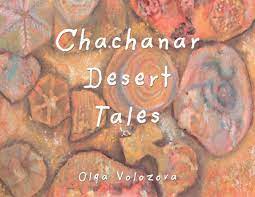Chris Ware's Acme Novelty Date Book series, which collects highlights from his sketchbooks, has been a fascinating look into the working process and raw, unfettered emotions of one of the greatest cartoonists of all time. Ware's willingness to push himself formally, his dogged work ethic (despite his own self-deprecation about being lazy), and the way he combines spontaneous expression with meticulous craft is unmatched. Of course, his work has always been fiction, some of it thinly veiled, or rather, reimagined scenarios regarding what could have been in his life. Despite his reputation as a miserabilist, Ware's deeply warm and humanistic approach to his characters is more akin to Charles Schulz or Jaime Hernandez. No matter what Schulz put Charlie Brown through, no matter how much misery Hernandez heaps on Maggie, they genuinely love and feel deep empathy for their creations. Some of Ware's best comics have involved giving characters with few redeeming qualities like Woody Brown or Jordan Lint their own sense of humanity, even if it's deeply flawed. Similarly, Ware seems deeply interested in trying to understand and empathize with characters who aren't his obvious stand-ins; Building Stories is the best example of this, but there are parts of Rusty Brown and Jimmy Corrigan where this is true as well.
Ware reveals a lot about his own mental illness in this book, zeroing in on obsessive-compulsive disorder. As one could see reading John Porcellino's The Hospital Suite, one of the worst things about OCD is that one can logically and rationally understand that the ever-present obsessive thoughts are utter nonsense, yet one can't help but be overwhelmed by them. In Ware's case, it is an unshakeable certainty of his own persistent, consistent worthlessness as a person but especially as an artist. Even as he acknowledges his incredible exhibit at the Pompidou, he is unable to emotionally accept and process it. Ware's frequent insistence at sometimes working so small (especially with regard to lettering) that it strains one's eyes to read it sometimes feels like a symptom of OCD, particularly in this collection. He's still saying difficult things out loud, but the font is so small that perhaps no one will notice, least of all him. This all seems unintentional, as even Ware wonders out loud why he does this.
The new Date Book is worth reading for the many strips about his daughter Clara alone. This could have been its own book, as they are not so much cute observations as they are small moments of awe regarding Clara's own incisive understanding of the world at a very young age. The period of time covered in this book is from 2002-2023. This makes the Clara strips all the more poignant, as he skips back and forth from her childhood to her leaving for college. Clara reads her father so clearly, calling him out for his lack of productivity and generally gently roasting him on any number of other topics. No one can zero in on one's foibles as one's own children, and Clara is every bit as incisive an observer as her father is. Ware also depicts a great deal of affection as well, along with giving her the space she needs to express herself. Ware has long expressed his admiration for Charles Schulz, and I can't help but keeping about Schulz's influence on his diary strips. If Ware is Charlie Brown, then Clara is somewhere between Lucy and Linus--a foil and a wise friend.
Ware's other diary strips sometimes go into his daily routines, but there's also a sense of middle-aged reflection on his youth. The incredible affection he had for his grandmother Weese and the unflappably sensible things she had to say about life were obvious guiding lights for him. The strips about his youth vary from reflections on loneliness and isolation to moments of perfect aesthetic joy being with his mother and grandparents and reveling in small bits of beauty. His strips as a teenager and young adult are hilarious reflections on grandiosity; he makes fun of himself even as he allows his past self moments of grace that are hard to give to his present-day self.
The single funniest strip is "Self-Isolating Comics & Stories," which is about the onset of the COVID pandemic and the subsequent quarantine. Predictably, Ware is gleeful at first that "my lifestyle has been vindicated!" until he realizes "maybe this is all just really, really sad" when it sets in that there are a lot of people he might not get to see for years.
There's plenty of other stuff to look at as well. Ware's figure drawing is unsurprisingly excellent, maintaining a naturalistic approach while rendering figures full of life. There are mock-ups of future projects, including a few that haven't been published in the US. The cover and other introductory pages have the usual, tiny diagrammatic comics that feature Ware's bleak, caustic sense of humor. There are also moments of sheer joy, especially when Ware is doing Frank King strips or drawing other things he finds interesting or pleasurable, like old-time advertisements or European comics. Ware's misgivings about his own work are superceded by his passionate defense of the art object, the sketchbook, and the diary, even if he feels in the modern world of social media that revealing one's inner voice debases it. Like with much of Ware's artistic output, he feels compelled, like Charlie Brown returning to the pitcher's mound every spring. Good ol' Chris Ware may never win, but his audience certainly does, being privy to process, spontaneously-composed and deeply emotional diary strips, and page after page of beautiful art.






























.jpg)





















